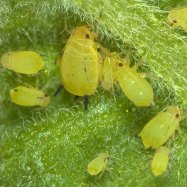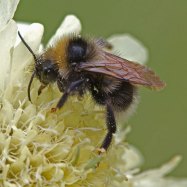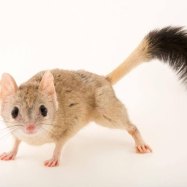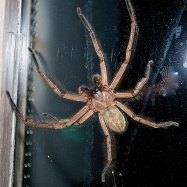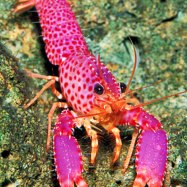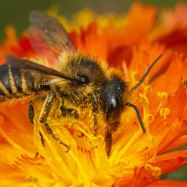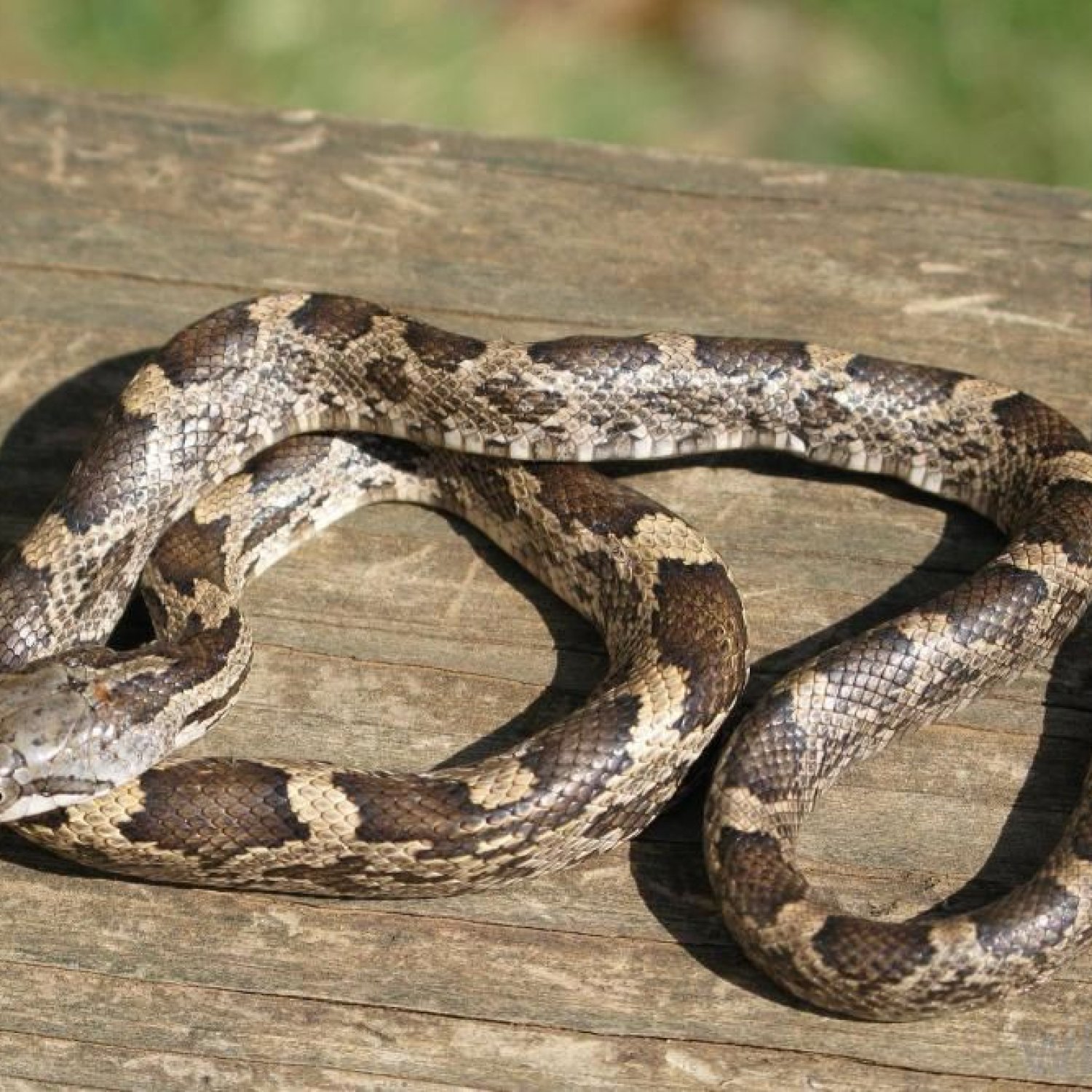
Chicken Snake
2-6 feet
Learn about the fascinating Chicken Snake, a common reptile found in eastern and central parts of North America. With a slender and elongated body, this non-venomous member of the Colubridae family can grow up to 6 feet long. Keep an eye out for these interesting creatures in your backyard! #animals #reptiles #wildlife
Animal Details Summary:
Common Name: Chicken Snake
Kingdom: Animalia
Habitat: Forests, woodlands, grasslands, farmlands
The Fascinating World of the Chicken Snake
The world is full of amazing creatures, from the tiniest insects to the largest whales. But among these creatures, there is one that often goes unnoticed, despite its interesting features and behaviors. This creature is none other than the Chicken Snake, scientifically known as Elaphe obsoleta.These snakes are commonly found across North America, particularly in the eastern and central parts Chicken Snake. They are known for their slender and elongated body shape, which can grow up to 2-6 feet in length. Despite their rather plain-sounding name, the Chicken Snake has a lot to offer, both in terms of its physical characteristics and its unique way of life. Let's dive into the world of the Chicken Snake and discover what makes them such fascinating creatures.
The Taxonomic Classification of the Chicken Snake
Before we delve into the details of the Chicken Snake, it's essential to understand its classification in the animal kingdom. The Chicken Snake belongs to the Kingdom Animalia, Phylum Chordata, and Class Reptilia, making them true reptiles. They are further classified into the Order Squamata and Family Colubridae, which is the largest family of non-venomous snakes.Appearance and Coloration
The Chicken Snake is a Medium-sized snake with a slender and elongated body. On average, they measure between 2-6 feet in length, with the females being larger than the males. These snakes have smooth and shiny scales, which are usually colored in shades of brown or gray Canada Warbler. Their coloration can vary significantly, with some individuals having a more patterned appearance, while others may be solid in color.But the most intriguing feature of the Chicken Snake's coloration is the dark blotches or bands that run down its body. These blotches or bands can range from black to dark brown, creating a striking contrast against their lighter-colored body. These patterns also act as camouflage, allowing them to blend into their surroundings and avoid any potential predators.
Habitat and Distribution
Chicken Snakes are found in a variety of habitats, including forests, woodlands, grasslands, and even farmlands. They have also been known to thrive in suburban areas, making use of man-made structures such as barns and sheds. They prefer areas with abundant vegetation, as it provides them with ample hiding spots and prey.These snakes are primarily found in the United States, with their geographical distribution covering most of North America. They are most commonly found in the eastern and central parts of the country, with a range that stretches from the Great Lakes region to the Gulf Coast. Their adaptability to different environments has allowed them to thrive in a vast range of habitats, making them one of the most widespread snake species in North America.
Diet and Feeding Habits
As with most snakes, the Chicken Snake is a carnivore, which means that they primarily eat other animals. Their diet mainly consists of small rodents, birds, and their eggs, thus earning them their common name of 'Chicken Snake.' They are also known to eat other reptiles, amphibians, and even insects.One of the most interesting things about the Chicken Snake's feeding habits is its ability to eat prey that is much larger than its head. This is possible due to the special jaw structure of these snakes, which allows them to stretch their mouth to accommodate larger prey. They also possess sharp and curved teeth, which are perfect for catching and holding onto their prey.
Behavior and Reproduction
The Chicken Snake is mostly a diurnal creature, meaning they are most active during the day. They are also semi-arboreal, which means they spend a significant amount of time climbing trees and bushes. This behavior allows them to hunt for prey and also seek shelter from potential predators.During the spring and summer, male Chicken Snakes engage in fierce competition for mating rights with females. They engage in a type of combat known as 'male combat dances,' where they entwine their bodies and try to push each other away. The dominant male ultimately wins the right to mate with the female. Mating usually occurs during the early summer, with females laying eggs in late summer and early fall.
Conservation Status
The Chicken Snake is not a protected species and is not listed as endangered. In fact, they are one of the most abundant snake species in North America. However, like most reptile and amphibian species, they face some threats to their population, such as habitat destruction and fragmentation. They are also often killed by humans due to their resemblance to venomous snakes, such as copperheads or rattlesnakes. As responsible members of society, it is our duty to respect and protect all creatures, including the Chicken Snake.Interesting Facts about the Chicken Snake
- They are excellent climbers: The Chicken Snake has strong muscles and specially designed scales that allow them to climb trees and bushes with ease.- They can emit a musky odor: When threatened, Chicken Snakes can release a strong musky odor from their cloaca to deter predators.
- They are constrictors: Like most colubrid snakes, Chicken Snakes are non-venomous and use constriction to subdue their prey.
- They are excellent swimmers: Despite their slender build, Chicken Snakes are skilled swimmers and can even stay underwater for up to 15 minutes.
- They can make great pets: Chicken Snakes are easy to care for and have a docile nature, making them a popular choice for snake enthusiasts.
In Conclusion
The Chicken Snake is a humble creature that has a lot to offer in terms of its unique characteristics and fascinating behaviors. Despite its plain-sounding name, this snake is an important member of the ecosystem and deserves our respect and protection. We hope this article has shed some light on this often overlooked but incredibly captivating creature. So next time you come across a Chicken Snake, take a moment to appreciate its beauty and admire its ability to adapt and thrive in its environment.

Chicken Snake
Animal Details Chicken Snake - Scientific Name: Elaphe obsoleta
- Category: Animals C
- Scientific Name: Elaphe obsoleta
- Common Name: Chicken Snake
- Kingdom: Animalia
- Phylum: Chordata
- Class: Reptilia
- Order: Squamata
- Family: Colubridae
- Habitat: Forests, woodlands, grasslands, farmlands
- Feeding Method: Carnivorous
- Geographical Distribution: North America
- Country of Origin: United States
- Location: Eastern and central parts of North America
- Animal Coloration: Variable, typically brown or gray with dark blotches or bands
- Body Shape: Slender and elongated
- Length: 2-6 feet
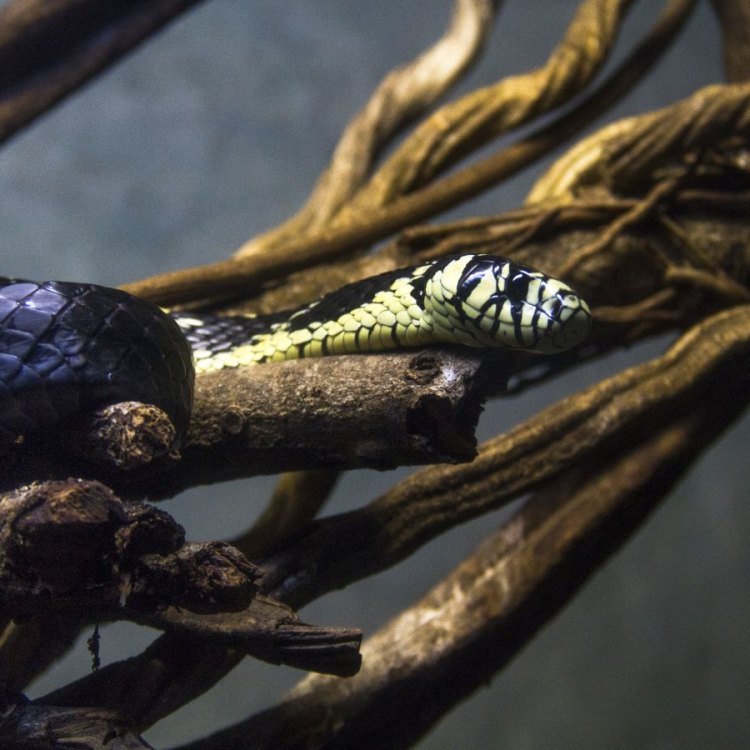
Chicken Snake
- Adult Size: 4-6 feet
- Average Lifespan: 10-20 years
- Reproduction: Oviparous
- Reproductive Behavior: Mating occurs in spring, females lay a clutch of 6-24 eggs
- Sound or Call: Produces a hissing sound when threatened
- Migration Pattern: Non-migratory
- Social Groups: Solitary
- Behavior: Nocturnal and secretive
- Threats: Habitat loss, road mortality, persecution by humans
- Conservation Status: Least Concern
- Impact on Ecosystem: Controls rodent populations
- Human Use: Not commonly used by humans
- Distinctive Features: Distinct neck pattern resembling a chicken's feathers
- Interesting Facts: Also known as Eastern rat snake, often found near chicken coops
- Predator: Birds of prey, mammals, larger snakes
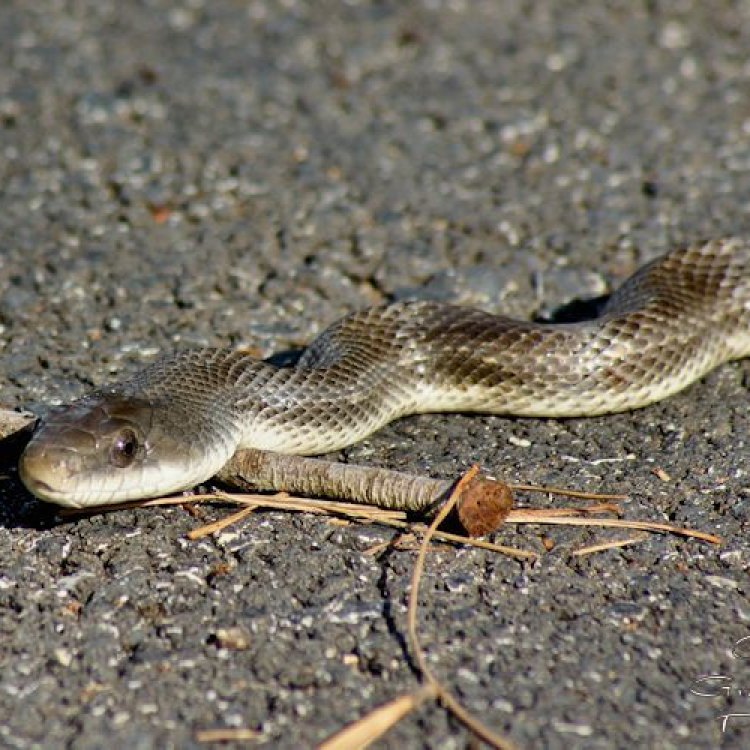
Elaphe obsoleta
The Chicken Snake: A Fascinating Reptile
When you hear the word "snake," you might picture a slithering, dangerous creature that most people avoid. However, not all snakes are created equal, and the chicken snake is a perfect example of that. Also known as the Eastern rat snake, this species has many unique features that set it apart from its cousins. From its distinctive appearance to its unusual behaviors, the chicken snake is a fascinating reptile that deserves more recognition PeaceOfAnimals.Com.So, let's take a closer look at the chicken snake and discover what makes it such a remarkable creature.
Size and Lifespan
The chicken snake typically grows to 4-6 feet in length, making it a medium-sized snake. Some individuals can even reach up to 8 feet in length, but that is quite rare. They have slender bodies and are non-venomous, so they pose no threat to humans. In fact, they are often kept as pets due to their docile nature and manageable size.In captivity, chicken snakes can live up to 20 years or even longer. In the wild, their average lifespan is between 10-20 years, depending on various factors such as food availability and environmental conditions.
Reproduction and Behavior
Like most snakes, the chicken snake is oviparous, meaning they lay eggs. Mating usually occurs in the spring, and females can lay a clutch of 6-24 eggs Cichlid. These eggs take about two months to hatch, and once they do, the young snakes are entirely independent and must fend for themselves.Chicken snakes are solitary creatures, only coming together during the mating season. They are also nocturnal, meaning they are most active at night, and are secretive, making them challenging to spot in the wild.
Distinctive Features
One of the most distinctive features of the chicken snake is its neck pattern, which resembles the feathers on a chicken's neck. The coloring of this pattern can vary from shades of brown to gray and is individual to each snake. This unique pattern is what gives the snake its name and sets it apart from other species.Sound and Migration Pattern
Another feature that makes the chicken snake unique is the sound it produces. When threatened, the snake will hiss, imitating the sound of a chicken. This hissing sound is used as a defense mechanism to ward off predators, and it can be quite effective. However, they are also known to vibrate their tails, which can mimic the sound of a rattlesnake, further confusing potential predators.Unlike some snake species, the chicken snake is non-migratory, meaning it stays in the same habitat year-round. They don't travel long distances, unlike birds or some other snake species. However, they do move around their habitat to find food and suitable shelter.
Threats and Conservation Status
As with many other species, the chicken snake faces various threats, primarily due to human activities. Habitat loss is a significant concern, as their natural habitat is being destroyed for development purposes. They are also at risk of road mortality, as they are often found near roads and highways, making them vulnerable to vehicle collisions.But perhaps the biggest threat to the chicken snake is human persecution. Due to their resemblance to venomous snakes and their habit of preying on chickens and other small animals, they are often killed by humans. This persecution is entirely unnecessary and can have adverse effects on the snake's population.
Luckily, the chicken snake is listed as "Least Concern" on the IUCN Red List, meaning their population is relatively stable. However, continued efforts must be made to protect their natural habitats and educate the public about these unique creatures' importance.
Impact on Ecosystem and Human Use
Despite being perceived as a pest by some, the chicken snake plays a crucial role in controlling rodent populations. As they primarily feed on rodents, they help keep their numbers in check, maintaining a balance in the ecosystem. They are also prey for birds of prey, mammals, and larger snakes, further illustrating their significance in the food chain.As for human use, the chicken snake is not commonly used by humans. However, some people do keep them as pets due to their docile nature and manageable size. In some cultures, they are also eaten as a delicacy. However, they are not a commonly traded species, and any trade and possession of them must comply with strict regulations to ensure their protection.
Interesting Facts
Some other interesting facts about the chicken snake include:- They are excellent climbers and can be found in trees or on buildings.
- They are often found near chicken coops, hence the name "chicken snake."
- They are skilled hunters and can even catch birds while in flight.
- They are one of the most common snake species in the United States, found in 38 out of 50 states.
- They are not aggressive towards humans and will only bite if threatened.
- They are even known to emit a foul-smelling odor to deter potential predators.
In Conclusion
The chicken snake is a unique and fascinating reptile with a lot to offer. From its distinctive appearance to its unusual behaviors, this species has captured the attention of many snake enthusiasts. Despite facing various threats, their population remains stable, giving us hope for their continued existence.It's essential to remember that every species, no matter how small or seemingly insignificant, plays a vital role in our ecosystem. So, let's appreciate and protect the chicken snake and all other creatures that call our planet home.
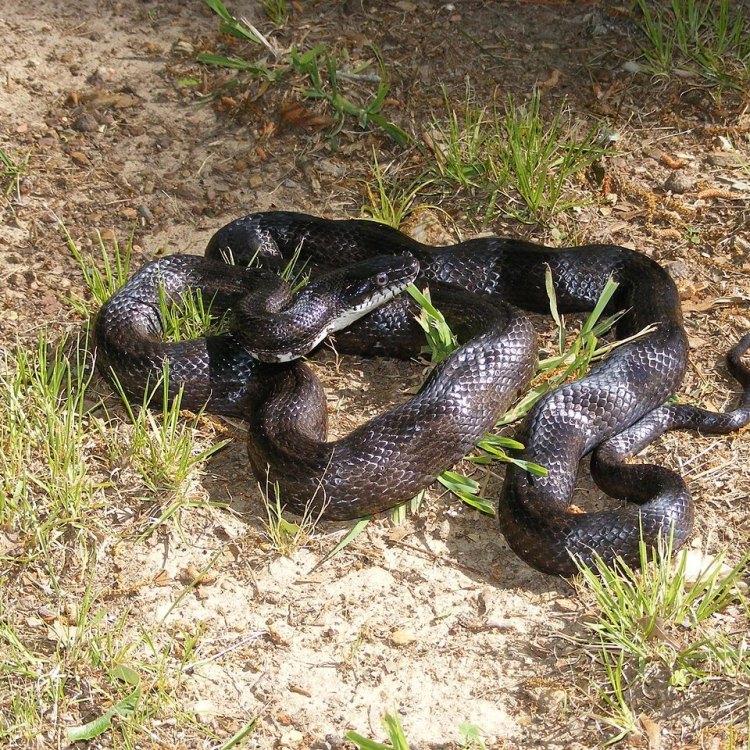
The Fascinating World of the Chicken Snake
Disclaimer: The content provided is for informational purposes only. We cannot guarantee the accuracy of the information on this page 100%. All information provided here may change without prior notice.

